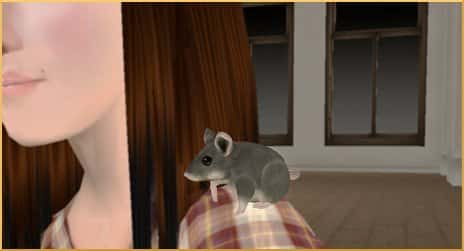
This year has already produced some interesting news relating to childhood obesity, with a lot of help from little rodents.
Deep Brain Stimulation, or DBS, for instance, involves inserting a devices into the brains of a mouse. Its home is stocked with low-calorie kibble 24/7, but high-fat food is made available for one hour per day. The mouse quickly catches on, and proceeds to pig out on the high-fat food before it can be taken away. “Get it while you can,” is the watchword.
But then… turn on the DBS and send some electrical impulses into the mouse’s nucleus accumbens, and equanimity is restored. The brain’s reward center feels like it has done something just as satisfying as an eating binge, and the critter remains uninterested by the opportunity to gorge itself. Next, turn the device off, and voila! The mouse reverts to its former self, lining up at the feeding trough when the daily offering of high-fat lunch appears.
Denise Chow wrote for The Huffington Post:
Since binge eating and other obesity-related behaviors have been linked to deficits of a chemical called dopamine, the researchers used deep brain stimulation to activate the dopamine type-2 receptor in the nucleus accumbens of mice.
One of this study’s senior authors is Tracy Bale, who teaches neuroscience to future veterinarians at the University of Pennsylvania, and the journalist quotes her, especially on the subject of the comparative safety of a neural implant, compared to bariatric surgery or even pharmaceuticals:
The things that drive people to overeat are part of the reward system. So, for example, if someone is under a lot of stress, or if they had a bad day, they might reward themselves with food. And bingeing is a component strongly linked with obesity… It sounds intimidating, but for this type of surgery, the morbidity rate is much less.
And this could be something for patients who don’t respond to drugs. Many drug companies are trying to target obesity by getting people to not feel hungry, but that doesn’t work. People aren’t overeating because they’re hungry. They’re eating because it tastes good, or makes them feel better. This treatment taps directly into that reward system.
This sounds awfully familiar, and not in a good way. In a creepy way. The original experiments on the pleasure centers of lab rats date from back in the 1950s, and speculative fiction writers glommed onto the idea. The “wirehead” became a character in the works of many different novelists. Like the rats, once supplied with the ability to stimulate their own brains’ pleasure centers, these fictional wireheads became addicts who would pretty much stimulate themselves to death via starvation and poor hygiene.
In Larry Niven’s imagined universe, the electronic brain implant is called a “droud,” and his character Louis Wu is the only human to have recovered from bondage to the droud. At least four other science fiction writers have included wireheading in their stories, but William S. Burroughs, in the 1959 novel Naked Lunch, may have been the first.
Your responses and feedback are welcome!
Source: “Brain & Obesity: Neural Implant Could Curb Overeating, Mouse Study Suggests,” The Huffington Post, 04/26/13
Image by Ramona Forcella.

 FAQs and Media Requests:
FAQs and Media Requests: 











